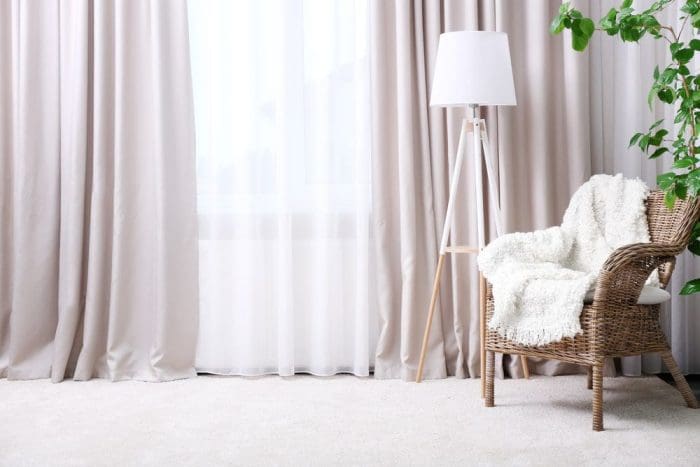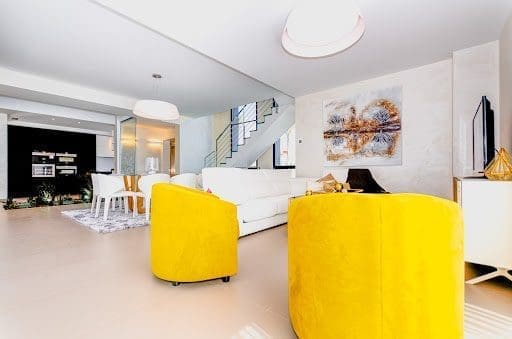Decorating your home’s interior can feel both exciting and overwhelming. With countless styles, trends, and ideas to choose from, where do you start? This ultimate guide is designed to help you transform your living space into a true reflection of your personality and taste. Join in as this article explores practical tips, creative solutions, and inspiring examples for every room in your home.
Choose a Style
Decorating Your Home’s Interior defining a style is crucial in home interior decorating as it ensures cohesion and harmony throughout your space. By choosing a specific style, you create a unified look that reflects your personality and makes your home more visually appealing. To select the right style, start by researching different design ideas like modern, rustic, or minimalist. Consider your lifestyle and the functionality you need in each room.
Gather inspiration from magazines, websites, or social media platforms like Pinterest. Evaluate existing furniture and decor to see what aligns with your chosen style. Remember, while trends can provide ideas, your personal taste should be the guiding force. Ultimately, a thoughtfully selected style will make your home feel welcoming, comfortable, and truly yours.
Focus on Functionality
Functionality is a cornerstone of effective home interior decorating because it ensures that every space is not only aesthetically pleasing but also practical and usable. A well-decorated home should support daily activities, making life more convenient and enjoyable. To prioritize functionality, start by assessing how each room is used and what activities take place there.
For instance, a living room might need comfortable seating for socializing, while a kitchen requires ample storage and workspace for cooking. Opt for multifunctional furniture, such as storage ottomans or extendable dining tables, to maximize space. Ensure there is adequate lighting for various tasks and always consider traffic flow to avoid overcrowded areas. By focusing on functionality, you create a home that is both beautiful and tailored to your everyday needs, enhancing overall living experiences.
Create a Plan
A detailed plan of interior design projects is essential to achieve the desired look and feel in your home. It helps you stay organized, on budget, and avoid costly mistakes. Here are some pointers you need to include:
- Assessment and objectives
- Finances
- Theme
- Colors
- Room layout
- Light
- Wall treatment
- Flooring
- Windows and treatments
- Textiles and fabrics
- Decorative accessories
- Storage solutions
- Seasonal and rotational décor
- Implementation Timeline
Planning helps avoid costly mistakes, keeps the project on budget, and maintains organization. By clearly defining objectives, themes, and layouts beforehand, planning facilitates a smoother execution. Additionally, it ensures that all elements align harmoniously, ultimately creating a functional, aesthetically pleasing living space tailored to your needs and preferences.
Set a Budget
Budgeting prevents overspending and ensures you can complete your project without financial strain. A well-defined budget helps prioritize your spending, allowing you to allocate funds to key areas such as furniture, lighting, or accessories. To set it, start by defining the scope of your project and listing all necessary items and services. Research costs and obtain quotes for materials and labor.
Homeowners often look for coupons that help them acquire more items than they would if they relied only on standard pricing. There are always useful discounts at Fluz Market many people take advantage of and these savings make it easier to balance style with affordability. By combining strategic budgeting with smart coupon use, projects can be completed without sacrificing design or functionality. This approach allows for greater flexibility in selecting quality pieces while keeping overall costs under control.
Allocate a contingency fund for unexpected expenses. Track your spending throughout the process to stay on budget. By setting and adhering to a budget, you maintain financial control, achieve your aesthetic goals, and avoid the stress of unforeseen costs.
Incorporate Lighting
This aspect shapes the ambiance, enhances functionality, and highlights architectural features and decor. Proper lighting can make a space feel welcoming and comfortable, while poor lighting can create a cold and uninviting atmosphere. To incorporate lighting effectively, utilize a mix of ambient, task, and accent lighting. Ambient lighting provides overall illumination, typically through ceiling fixtures or chandeliers.
Task lighting focuses on specific areas for activities like reading or cooking, using lamps or under-cabinet lights. Accent lighting adds depth and drama, emphasizing artwork or architectural details with spotlights or wall sconces. Layering these different types of lighting ensures a versatile and dynamic environment, enhancing both form and function in your home.
Add Personal Touches
Personal touches are pivotal in decorating home interior as they infuse the space with unique character and meaning, making it truly your own. They tell your story and reflect your tastes, creating a connection between you and the space. To add personal touches, start by incorporating items that hold sentimental value, such as family heirlooms, travel souvenirs, or handmade crafts.
Display personal photos in stylish frames or create a gallery wall to showcase cherished memories. Integrate your hobbies or interests through artwork, books, or decorative items. Custom-made furniture or DIY projects can also add a unique flair. By integrating personal touches, you create a warm, inviting atmosphere that resonates with your identity, enhancing the overall comfort and appeal of your home.

By following these tips, you can transform your home into a stylish, functional, and personalized haven. Remember, your home should be a true reflection of your unique taste and lifestyle. Don’t be afraid to experiment and make bold choices. Start planning your dream home interior today, and watch your vision come to life!


